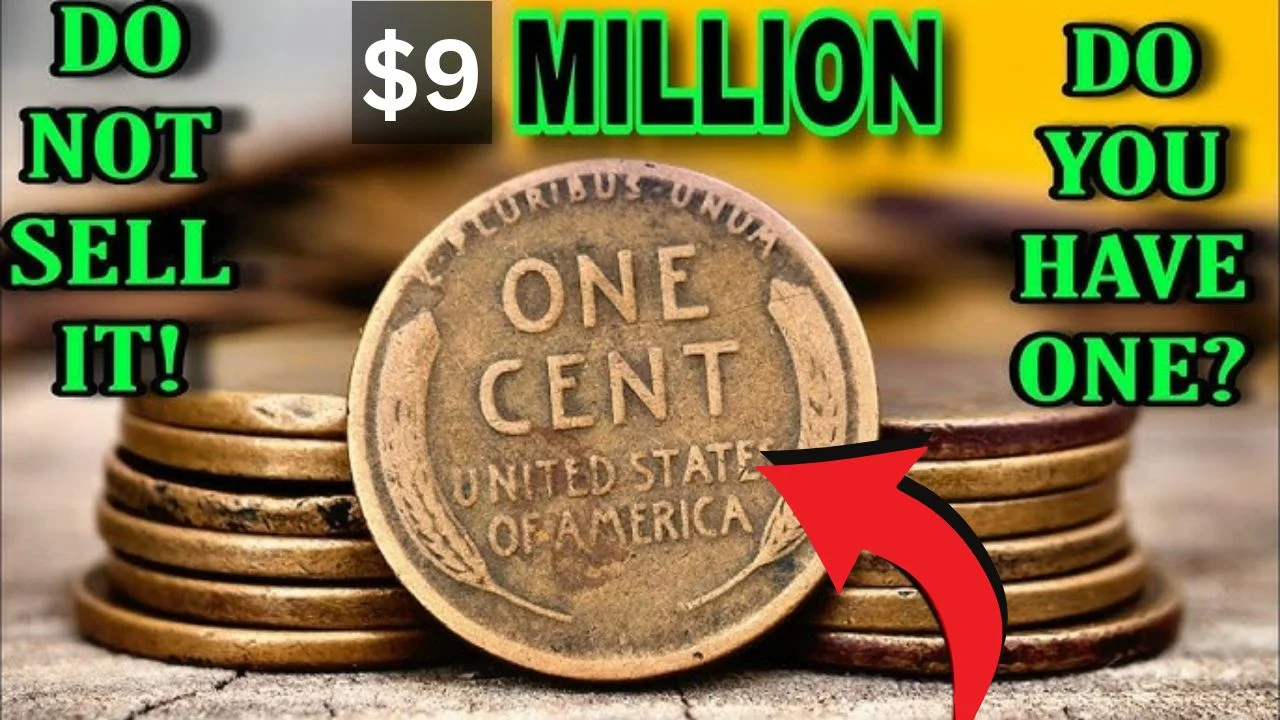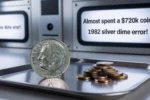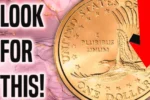Rare Lincoln Wheat Penny Worth $9 Million Could Be in Your Pocket: Many people carry loose change in their pockets without giving it a second thought. But what if one of those coins was worth millions? A rare Lincoln Wheat Penny, once considered an ordinary piece of currency, has shocked collectors and historians alike with its staggering value of $9 million. This extraordinary coin, hiding in plain sight, proves that treasures can often be found in the most unlikely places.
The History Behind the Lincoln Wheat Penny
Introduced in 1909 to commemorate the 100th anniversary of Abraham Lincoln’s birth, the Lincoln Wheat Penny holds a special place in American numismatic history. Designed by Victor David Brenner, it became the first U.S. coin to feature a real person’s likeness. Its distinctive reverse side displays two wheat stalks framing the words “ONE CENT,” giving rise to its popular nickname—the Wheat Penny. Over the decades, billions were minted, but a few rare errors and unique issues have turned some of them into highly sought-after collector’s items.
Why One Penny is Worth $9 Million
Not every Lincoln Wheat Penny commands a fortune, but certain minting errors and rare dates make specific examples incredibly valuable. The $9 million Wheat Penny owes its worth to an unusual blend of factors: a rare 1943 copper-alloy strike, flawless condition, and historical significance. In 1943, most pennies were minted in steel due to copper shortages during World War II. However, a small number were accidentally struck on copper planchets, creating one of the rarest coins in U.S. history. Today, these copper 1943 pennies are regarded as the “holy grail” of coin collecting.
How to Spot a Rare Lincoln Wheat Penny
Checking your spare change might not sound exciting, but identifying a rare Wheat Penny requires a sharp eye and some knowledge. Key features to watch for include the date, mint mark, and material. A 1943 penny that sticks to a magnet is steel and common, but one that does not could be the rare copper version. Additionally, errors like double-dies or unique mint marks can also increase value. Even among Wheat Pennies, condition is critical; coins in pristine, uncirculated states fetch higher prices.
The Growing Interest in Coin Collecting
Stories of people discovering valuable coins in old jars or inherited collections have fueled a surge in interest in coin collecting. For many, it starts as a hobby and becomes a passion. Auction houses and private collectors are willing to pay staggering amounts for rare specimens, and the Wheat Penny is often at the center of this excitement. With metal detecting, estate sales, and even pocket change as potential sources, the thrill of the hunt appeals to both seasoned collectors and curious newcomers.
Why This Discovery Matters Today
Beyond its monetary value, the $9 million Wheat Penny serves as a reminder of history’s quirks and the hidden stories in everyday objects. Coins like these connect us to significant moments in American history—from wartime resourcefulness to the evolution of currency design. They also highlight how a small mistake in a minting process can lead to one of the most coveted treasures in numismatics.
FAQs
What makes the 1943 Wheat Penny so rare?
Most 1943 pennies were made from steel due to copper shortages in World War II. Only a few were accidentally struck on copper, making them extremely rare.
How can I check if I have a valuable Wheat Penny?
Look at the date and material. A 1943 penny that does not stick to a magnet could be copper. Also, examine it for errors or unusual mint marks.
Can a regular Wheat Penny still be valuable?
Yes. Certain dates, like 1909-S VDB and 1914-D, are rare and valuable even without errors, especially in good condition.
Where can I sell a rare coin if I find one?
You can consult a professional coin dealer, visit a coin grading service, or consider auctioning it through a reputable auction house.



